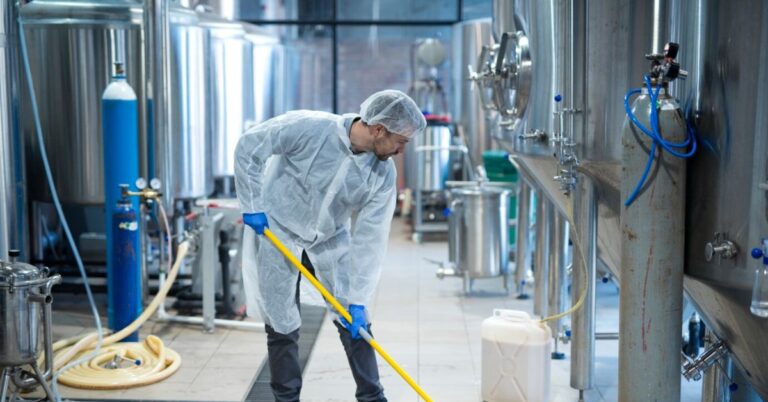Table of Contents
- Understanding High-Velocity Pipeline Cleaning
- Techniques Involved
- Key Benefits
- Recent Innovations
- Environmental Impact and Safety
- Case Studies
- Challenges in Implementation
- Future Trends
Key Takeaways
- High-velocity pipeline cleaning removes debris, maintaining smooth flow and preventing blockages.
- Techniques like mechanical, chemical, and foam pigging offer tailored solutions for diverse pipeline needs.
- Recent technological innovations, such as smart pigs, enhance data collection for improved maintenance.
- Environmental and safety measures are crucial and are addressed in modern cleaning processes.
Understanding High-Velocity Pipeline Cleaning
Maintaining a seamless flow of materials is crucial for industries that rely on extensive pipeline systems. Pipelines serve as the critical veins of operations, ensuring that resources are transported efficiently from one location to another. High velocity pipeline cleaning is one of the most effective solutions for maintaining this efficiency. This method utilizes the power of speed and pressure to dislodge and remove internal buildup within pipelines, thereby preventing blockages that could lead to costly disruptions. Whether used in oil, water treatment, or industrial manufacturing, high-velocity techniques ensure that pipelines remain clear and operational, safeguarding the flow and reducing the need for maintenance dives.
Techniques Involved
High-velocity pipeline cleaning boasts a range of techniques that cater to various industry needs:
- Mechanical Pigging: This technique involves cleaning pigs with robust brushes or scrapers. These pigs physically scrub the interiors of pipelines, effectively removing accumulated debris and hard mineral deposits. This physical interaction ensures that built-up residues, which mechanical cleaning alone might miss, are thoroughly eradicated from the pipeline. As noted in a recent article, advancements in pigging technology are enhancing the precision and performance of these cleaning methods, ensuring more efficient pipeline maintenance.
- Chemical Pigging: Chemical pigging incorporates specialized cleaning agents that dissolve stubborn deposits, such as scale or organic matter, that adhere to pipeline walls. This method is particularly effective when non-invasive cleaning is essential, as the chemical reactions clean without requiring rigorous scrubbing. Integrating physical and chemical processes can provide a comprehensive cleaning solution for even the most challenging deposits.
- Foam Pigging: Ideal for intricate pipeline systems with numerous bends and intersections, foam pigs offer flexibility. These pigs conform to various line sizes and shapes, effectively navigating complex infrastructures. Foam pigging is especially beneficial in industries with standard pipeline sizes, as it provides consistent cleaning without risking damage to bends or curvatures.
Key Benefits
The implementation of high-velocity pipeline cleaning brings a multitude of benefits beyond mere debris removal. Primarily, cleaning allows for energy savings as the efficiency of pipeline operations improves. Clean pipelines minimize frictional resistance, enabling smoother transportation of fluids and gases. This reduction not only lowers operational costs by decreasing energy consumption but also extends the lifespan of pipelines by minimizing wear. Moreover, the reduced need for frequent heavy maintenance interventions saves time and effort, allowing businesses to focus resources on core operations without frequent interruptions.
Recent Innovations
In recent years, significant advancements have been made in the technologies used in pipeline cleaning. A standout innovation is the smart pigging technique. Smart pigs are equipped with sensors and data collection tools that enable them to inspect and clean pipelines simultaneously. These advanced pigs gather essential data about pipeline integrity, including wall thickness and corrosion levels, providing operators with the insights necessary for informed maintenance decisions. This ability to perform dual functions enhances efficiency and significantly reduces downtime, ensuring that maintenance is both reactive and predictive, as well as preemptive.
Environmental Impact and Safety
High-velocity pipeline cleaning places a strong emphasis on reducing its environmental footprint and enhancing safety measures. Traditional cleaning methods often involve the extensive use of chemicals, but modern techniques strive to mitigate this impact by optimizing cleaning agents and reducing waste production. Industries can maintain operational integrity while protecting the local ecosystem through strategies that reduce environmental impacts. Safety protocols during cleaning ensure that pipeline maintenance does not compromise ecological health, reflecting the industry’s commitment to sustainable practices.
Case Studies
Several case studies outline the transformative effects of high-velocity pipeline cleaning on operational performance. In one instance, a major utility company cut maintenance costs by 30% upon integrating advanced cleaning methodologies. This shift enhanced operational reliability and improved service delivery, ensuring customers received uninterrupted and quality services. Such cases are compelling examples of how strategic pipeline-cleaning initiatives can contribute to extensive cost savings and operational efficiencies across various sectors.
Challenges in Implementation
Even with its numerous benefits, implementing high-velocity pipeline cleaning can be challenging. A significant challenge is the substantial initial capital required for equipment and training. Ensuring operators are skilled and well-versed in these advanced methods can necessitate comprehensive training programs, which require time and financial resources. Every pipeline system is unique, and customizing solutions to fit specific needs can be complex. However, overcoming these challenges can reward industries with enhanced long-term returns, offsetting the initial expenditure with improved efficiency and durability.
Future Trends
The pipeline industry is poised to capitalize on technological strides and integrate them into maintenance routines. Trends such as AI-driven predictive maintenance and real-time health monitoring systems are on the horizon, promising further refinements in operational efficiency. These technologies facilitate a transition from reactive to proactive maintenance approaches, enabling operators to foresee problems before they develop into expensive repairs.
By coupling these digital strategies with existing high-velocity cleaning techniques, industries can ensure the continued safety and reliability of their critical infrastructure, paving the way for sustainable growth in the future.

